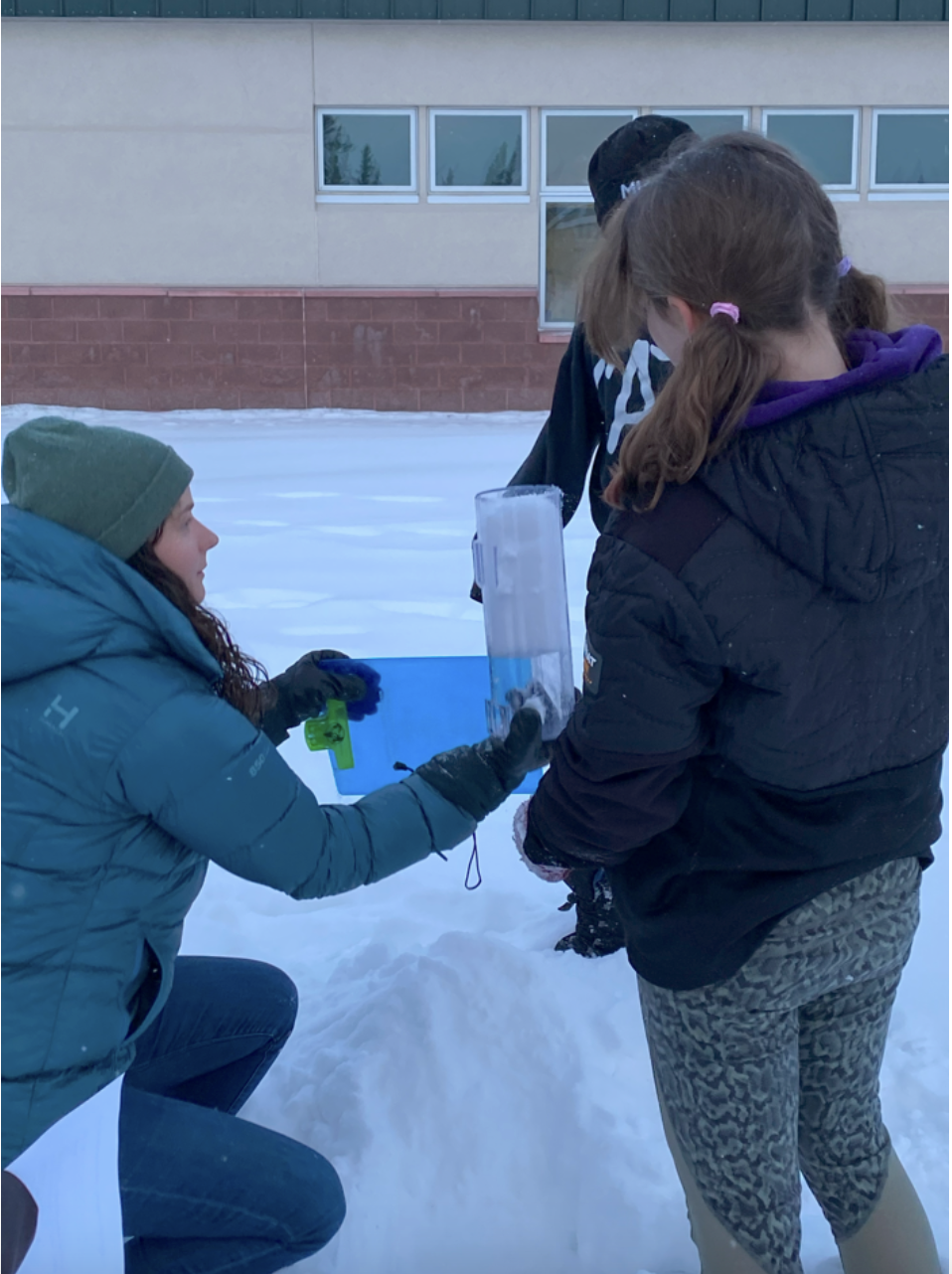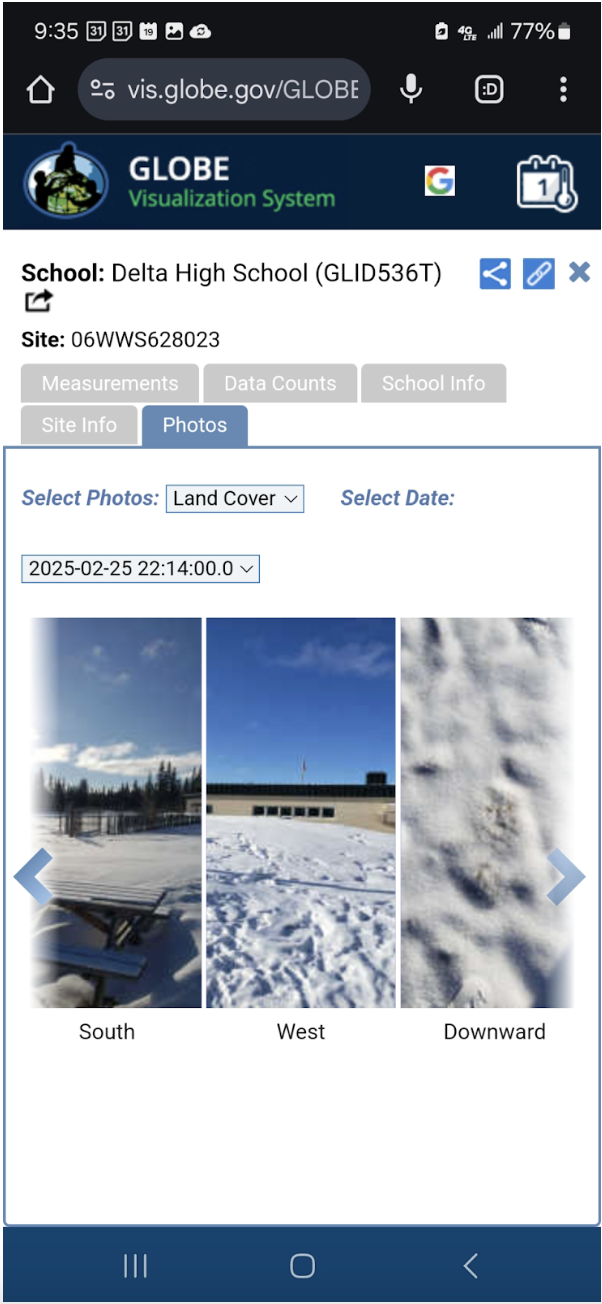GLOBE News
Snow View Observations Snowball Into New Science Collaborations!
Over 3500 locations submitted data across the world for the Snow View Intensive Observation Period (IOP) in February, 2025. The data included observations collected with the GLOBE Observer app from the clouds, land cover and trees tools as well as solid precipitation and snow water equivalent (SWE) data that were manually entered or from automated atmospheric weather stations.
Scientists are still analyzing the photo observations and connecting them to satellite data. We learned that each region has different research questions and that a single observation counts! For example, in Alaska, meteorologists compared two GLOBE Observer Land Cover feature photos tagged as blowing snow to satellite imagery of blowing snow. Through this process of determining that the photos were not technically showing blowing snow lifted high above the ground, scientists are thinking of new ways to utilize GLOBE Observer feature photos. To learn more about blowing snow, see the story Harnessing Satellite Data: NOAA’s New Satellite Tool Enhances Winter Weather Warnings by National Environmental Satellite, Data, and Information Service (February 7, 2025).
Thank you to the organizations who collected snow observations using the GLOBE precipitation protocol. Of the nearly 170 solid precipitation measurements submitted, over half (52%) stated that the “occurrence type” of precipitation was “rain mixed with snow.” Thank you to AL Faisal Secondary School at Riyadh, Dome International Schools at Riyadh, and Rowad AL-Omaraa secondary School At Riyadh for completing the most “rain mixed with snow” measurements over the month of February. Thank you to State University of New York - Fredonia, Watershed Charter School, and Rakke Kool for submitting the most “snow” measurements during February.
 GLOBE SWE data from Alaska organizations, Watershed
Charter School in Fairbanks, and Delta Junction Junior and Senior High
School and Future Farmers of America (FFA) chapter in Alaska, are
being used by the NASA SnowEx intern Julia White to compare to
satellite data using Interferometric Synthetic Aperture Radar (InSAR)
techniques. Julia conducted a GLOBE
Observer data request on Snow and Snow Drifts in Delta Junction
to gather land cover photo, snow depth and SWE data, while the Delta
Junction FFA students participated in the International Virtual
Science Symposium (IVSS) for the first time. The collaborators will be
presenting a poster titled, “Snowballing Participatory Science: From
an Inventory to an Intensive Observation Period” at the 2025
Conference for Advancing Participatory Sciences in May. The photo on
the right shows Julia collecting a "snow water equivalent"
sample with students from Delta Junction, Alaska.
GLOBE SWE data from Alaska organizations, Watershed
Charter School in Fairbanks, and Delta Junction Junior and Senior High
School and Future Farmers of America (FFA) chapter in Alaska, are
being used by the NASA SnowEx intern Julia White to compare to
satellite data using Interferometric Synthetic Aperture Radar (InSAR)
techniques. Julia conducted a GLOBE
Observer data request on Snow and Snow Drifts in Delta Junction
to gather land cover photo, snow depth and SWE data, while the Delta
Junction FFA students participated in the International Virtual
Science Symposium (IVSS) for the first time. The collaborators will be
presenting a poster titled, “Snowballing Participatory Science: From
an Inventory to an Intensive Observation Period” at the 2025
Conference for Advancing Participatory Sciences in May. The photo on
the right shows Julia collecting a "snow water equivalent"
sample with students from Delta Junction, Alaska.

In Delta Junction, students are measuring total snow depth and snow water equivalent (SWE) in a snow drift near their school, pictured in the GLOBE Observer land cover photos on the left.
Stay tuned for more Snow View news and details about future Snow View IOPs. Visit the Snow View IOP webpage for more information.
News origin: GLOBE Implementation Office





